the Glorious Past of Luxor Temple: A Guide to its History, Architecture, Deities and Statues in Luxor, Egypt“
The Luxor Temple is an ancient Egyptian temple complex located in the city of Luxor, southern Egypt. It is one of the most important and well-preserved temples in the country and is considered a symbol of the city. The temple was built in the 14th century BC and was dedicated to the god Amun and his consort Mut.
The temple’s main entrance is located at the south end of the temple, which is surrounded by two massive pylons and a large courtyard. The temple is known for its stunning architectural features, including its grand columns, obelisks, and numerous statues and reliefs. There are also several smaller chapels and sanctuaries within the temple, each dedicated to different gods and goddesses.
The Luxor Temple is also known for its festivals and ceremonies, which were held annually to celebrate the cult of the god Amun. During these festivals, the temple was the site of religious processions, sacrifices, and other rituals.
Today, the Luxor Temple is a popular tourist destination, attracting visitors from all over the world to see its impressive architecture, rich history, and cultural significance.
What is so special about Luxor Temple?
What is inside of the Luxor Temple? What does the Luxor Temple symbolize? Is Luxor Temple the same as Karnak Temple?
Who are the builders of the Luxor Temple?
The Luxor Temple in Luxor, Egypt was built by several pharaohs over the course of many centuries. It was originally built by Pharaoh Amenhotep III of the 18th dynasty (15th century BC) and was expanded by Pharaoh Ramses II of the 19th dynasty (13th century BC). Other pharaohs, including Tutankhamun and Horemheb, also made additions to the temple during their reigns. The exact builders of the temple are not known, but it was likely built and maintained by a team of architects, engineers, and skilled laborers.
Why was Luxor Temple built?
Luxor Temple was built as a temple complex dedicated to the deity Amun, the god of the Theban Triad in ancient Egyptian religion. It was also associated with the reign of the pharaohs of the New Kingdom, particularly the pharaohs of the 18th and 19th dynasties. The temple was built in several phases, with additions and renovations over the centuries, and was used for religious ceremonies, including the annual Opet Festival, which celebrated the regeneration and unity of Egypt. The Luxor Temple was also considered a symbol of the pharaoh’s power, and its architectural style and decor reflected the wealth and grandeur of the pharaohs and their reign.
Luxor Temple History:
Luxor Temple is a magnificent temple complex located in the city of Luxor in southern Egypt. The temple was built during the reign of Pharaoh Amenhotep III in the New Kingdom period, around 1390 BCE. The temple was dedicated to the god Amun, the god of the sun and the king of the gods, and was also the site of the annual Opet Festival, which was a grand religious festival that lasted for several days.
Over the centuries, the temple was expanded and modified by several Pharaohs, including Ramses II, who added two massive statues of himself at the entrance of the temple. In later times, the temple was used as a Christian church, and some parts of the complex were converted into a mosque.
Despite centuries of neglect and damage, much of the Luxor Temple has been restored, and it is now one of the most visited tourist sites in Egypt, attracting millions of visitors each year. Visitors to the temple can see the towering columns, intricate reliefs, and impressive statues that are evidence of the grandeur and skill of the ancient Egyptian civilization.
Luxor Temple Facts:
Luxor Temple was built during the New Kingdom period, around 1400 BCE, by Pharaoh Amenhotep III, and was dedicated to the god Amun, his wife Mut, and their son Khonsu. The temple was an important religious and cultural center, where the god Amun was worshiped and the Opet Festival was held annually.
In addition to the facts you listed, Luxor Temple also contains several monumental structures, including a hypostyle hall, a sacred lake, and two large statues of Ramses II. The temple was also partially converted into a mosque during the Islamic period, and remnants of a Coptic church can also be found on the site.
Today, Luxor Temple is a popular tourist destination and a valuable source of information about Ancient Egyptian religion, culture, and history. Visitors can explore the temple’s well-preserved structures, see its magnificent columns and sculptures, and learn about the ancient rituals and beliefs that were practiced there.
Luxor Temple Plan / Map:
The temple complex is quite vast and contains many different structures and features, including a long avenue of Sphinxes, several pylons, statues of ancient pharaohs, and numerous halls and rooms dedicated to various gods and goddesses. The temple was an important center of religious and political power during the time of ancient Egypt, and remains one of the most fascinating and well-preserved examples of Egyptian architecture and engineering.
Rams Road “Sphinx Statues Street” 3 km.
The first Pylon of King Ramses II
6 Colossal Statue of King Ramesses II
Opening the court of King Ramesses II
3 Shrines of Queen Hatshepsut “Female Pharaoh” and King Thutmose III.
The second Pylon
2 Colossal seated statue of Ramesses II
The corridor of King Amenhotep III’s procession
Court of the Sun King Amenhotep III
vestibule
Alexander Chapel
Coronation Room
Divine birthing room
12 Columnedhalls
The three shrines of the sacred boats of Amun, Mut and Khonsu
The perimeter wall of the temple.
Luxor Temple Architecture
The second Pylon:
The second pylon of Luxor Temple is considered one of the largest and most impressive structures in the temple complex. It is comprised of two massive towers that stand over 50 meters high and are adorned with reliefs and inscriptions detailing the victories and accomplishments of the pharaoh who built it, Ramesses II. The pylon also features two enormous seated statues of the king, each weighing over 70 tons, as well as a series of smaller figures depicting the pharaoh’s family and officials. The second pylon serves as a monumental entrance to the inner sanctuaries of the temple and its architecture showcases the power and grandeur of the ancient Egyptian monarchy.
Pharaonic King Ramses II
Ramesses II, also known as Ramesses the Great, was a Pharaoh of Egypt who ruled from 1279 to 1213 BC. He was the third Pharaoh of the Nineteenth dynasty and is considered one of the most powerful and effective Pharaohs of ancient Egypt. During his 67-year reign, he led several military campaigns and expanded Egypt’s territory and influence. He also built many monumental structures and temples throughout Egypt, including the Ramesseum in Thebes, the Abu Simbel temples in Nubia, and the colossal statue of himself at the Great Temple of Abu Simbel. He was also responsible for adding inscriptions to the Karnak Temple Complex in Luxor, which he dedicated to the god Amun.
West (right) side of Luxor Temple
The west side of the Luxor Temple is also known as the right side of the temple. This side of the temple is characterized by its grand entrance, which is marked by a towering pylon that was built by Pharaonic King Ramses II. The pylon stands at about 80 feet tall and is adorned with large relief sculptures that depict scenes of military victories and religious ceremonies. Beyond the pylon, the right side of the Luxor Temple leads to a large open courtyard surrounded by towering columns and grand statues of King Ramses II. The right side of the temple also contains several smaller shrines and chapels, including the Chapel of Alexander the Great, which was built in the 4th century AD.
East (left side) of Luxor Temple
The east (left) side of Luxor Temple features several interesting architectural features and structures, including:
The first pylon: The first pylon is located on the east side of the temple and is one of the largest and most impressive structures in the temple complex. It was built by Pharaoh Ramses II and features six colossal statues of the king, which symbolize his power and strength.
The court of Ramses II: This open court was also built by Ramses II and features several smaller temples and shrines dedicated to various gods and goddesses.
The shrines of Hatshepsut and Thutmose III: The shrines of Hatshepsut and Thutmose III are located on the east side of the temple and are dedicated to these powerful female pharaohs.
The second pylon: The second pylon is located on the east side of the temple and features two large, seated statues of Ramses II.
The corridor of Amenhotep III’s procession: This corridor was used for the annual procession of the god Amun and his family, and is lined with beautiful carvings and reliefs depicting scenes from Egyptian mythology.
Overall, the east side of Luxor Temple offers a fascinating look into the architectural styles and beliefs of ancient Egypt.
The first courtyard of Luxor Temple
The first courtyard of Luxor Temple are located at the front of the temple and are surrounded by a series of walls and pylons. The first courtyard were originally built during the New Kingdom period, and were later expanded and renovated by later Pharaohs. The first courtyard of the temple were used for various religious and cultural ceremonies, and were also a place for the public to gather. They were lined with colossal statues of Pharaohs and were decorated with hieroglyphs and reliefs that depicted the achievements and victories of the Pharaohs. The first courtyards of Luxor Temple are considered to be one of the most important and impressive architectural features of the temple, and are an important part of its history and legacy.
The chapels of King Thutmosis II:
The chapels of King Thutmosis III are located in the Luxor Temple in Egypt. These chapels were dedicated to the god Amun, who was worshipped as the king of the gods. Thutmosis III was a powerful pharaoh of ancient Egypt and ruled for more than 50 years. The chapels were part of the larger complex of the Luxor Temple, which was built over a period of several centuries and served as a center for religious, political and cultural life. The chapels were likely used for religious ceremonies and rituals, and may have also served as a place for the pharaoh to receive offerings and perform other important functions. Today, the chapels of Thutmosis III are popular tourist attractions and provide a glimpse into the religious and cultural practices of ancient Egypt.
Courtyard of the 14 columns in the temple of Luxor
The Courtyard of the 14 Columns is located inside Luxor Temple and is considered one of the main architectural elements of the temple. It is surrounded by a peristyle of 14 large papyrus-bud columns, each standing over 20 meters tall. These columns are believed to symbolize the 14 districts of Thebes, the city in which the temple is located. The columns are arranged in two rows, with each column having a capital in the shape of a papyrus flower. The Courtyard of the 14 Columns was used for religious ceremonies and processions and would have been a magnificent sight to behold during ancient times.
Temple of Amenophis III:
The Temple of Amenophis III is a temple located in the ancient city of Thebes (modern-day Luxor), Egypt. It is dedicated to the god Amun and was built by Pharaoh Amenophis III during the 18th dynasty (approximately 1391–1353 BC). The temple is considered one of the largest in the area of Thebes and is known for its large and beautiful columns and its well-preserved walls, which contain scenes depicting the pharaoh’s military campaigns, religious festivals, and hunting expeditions. The temple was also used for the Opet Festival, which was an important religious festival in ancient Egypt, and involved the transportation of the sacred statues of Amun, Mut, and Khonsu from the nearby Karnak Temple to the Luxor Temple. Today, the temple remains a popular tourist destination and is a significant site for the study of ancient Egyptian religion, art, and architecture.
Alexander Chapel:
This small room was added to the temple by Alexander the Great and is located near the entrance to the temple. It was dedicated to Alexander himself and was used as a place of worship for the emperor.
Coronation Room:
It is believed to be the place where the pharaohs of ancient Egypt were crowned. It is located near the entrance of the temple and contains inscriptions and scenes depicting the coronation of various pharaohs.
Divine birthing room:
This room is located near the entrance of the temple and is believed to be where the goddess Isis gave birth to the god Horus. It contains scenes and inscriptions depicting the birth of Horus and the goddess Isis.
12 Columned halls:
The temple of Luxor contains several halls, each containing 12 columns, which were used for various religious ceremonies and rituals. These halls were used by the pharaohs and their priests to honor the gods and to offer offerings and sacrifices.
The three shrines of the sacred boats of Amun, Mut and Khonsu:
These shrines were used to house the sacred boats used in the Opet Festival. The festival was held annually to transport the procession of the gods Amun, Mut, and Khonsu from the Karnak Temple to the Luxor Temple.
The Coronation Room, Room of the Divine Birth, Tomb of Alexander Park of Amun and the Holy of Holies were all part of the Luxor Temple complex and were used for various religious ceremonies and rituals. The wall around the temple was made of soft bricks, which were commonly used in ancient Egyptian architecture.
What is inside of the Luxor Temple?
The Luxor Temple contains a variety of architectural features, sculptures, and inscriptions that tell the story of its history and the religious practices that took place there. Some of the notable features of the temple include:
The First Pylon, which was built by King Ramses II and features 6 colossal statues of the king.
The Court of King Ramesses II, which features 3 shrines dedicated to Queen Hatshepsut and King Thutmose III.
The Second Pylon, which has 2 colossal seated statues of Ramesses II.
The Corridor of King Amenhotep III’s Procession, which leads to the Court of the Sun King Amenhotep III.
The Vestibule, or second antechamber, which was used for offering offerings to the god Amun.
The Alexander Chapel, which was built in the Roman era and contains inscriptions and scenes dedicated to Imperator Diocletian and his three companions, and Maximilian with their Caesars, Constantius Chlorus and Galerius.
The Coronation Room, which contains inscriptions depicting King Amenhotep III’s coronation.
The Divine Birthing Room, which contains inscriptions depicting King Amenhotep III as the sun.
The 12 Columned Halls, which are part of the Tomb of Alexander Park of Amun.
The Holy of Holies, which was built during the era of King Amenhotep III and contains 3 small rooms for offering offerings to the Luxor Trinity of Amun, Mut, and Khonsu.
A perimeter wall made of soft bricks that surrounds the temple.
Luxor Temple Deity:
The Luxor Temple was dedicated to the god Amun, one of the most important deities in ancient Egyptian religion. The temple was also associated with other gods including his consort Mut and their son Khonsu, who together were worshipped as the Luxor Triad. The temple served as a site of worship and was the location of various religious festivals, including the Opet Festival, which was held annually to transport the procession of the god Amun, his wife Mut, and their son Khonsu to visit the headquarters of the god Amun in the temple.
These are some of the Ancient Egyptian deities associated with the Luxor Temple. The temple was primarily dedicated to the god Amun, who was worshipped as the king of the gods and the creator of the universe. His wife, the goddess Mut, was also worshipped in the temple,
Amun God.
Mut God.
The god Khonsu, “the moon god”.
God Amenmobet.
The god Ra
God Mont
God Montu
God Hathor
God Nut
Go Men
God Maat.
Luxor Temple Statues:
Sphinxes
6 Statues of King Ramses II.
What is so special about Luxor Temple?
Luxor Temple is special for several reasons:
Historical significance: Luxor Temple is one of the most important ancient Egyptian temples and has a rich history dating back to over 3400 years. It was built during the New Kingdom period and is considered a major religious and cultural center.
Architecture: The temple is an architectural masterpiece, with its monumental pylons, grand halls, and intricate carvings. The temple’s design reflects the wealth and power of the ancient Egyptian empire during its time.
Religious importance: Luxor Temple was dedicated to the god Amun and his consorts Mut and Khonsu. It was also the site of the annual Opet Festival, which was a major religious event in ancient Egypt.
Artistic value: Luxor Temple is filled with beautiful and intricate carvings, sculptures, and paintings, including the reliefs of King Amenhotep III and the statues of King Ramses II.
Unique features: Luxor Temple is unique in that it has been used by different religions throughout its history, including Ancient Egyptian, Coptic, and Islamic religions. This makes it a fascinating example of religious tolerance and cultural diversity.
Overall, Luxor Temple is a truly special and significant place, both historically and culturally, and it remains an important monument to ancient Egyptian civilization.
What does the Luxor Temple symbolize?
The Luxor Temple symbolizes the religious, cultural, and political significance of ancient Thebes, the former capital of Egypt during the New Kingdom period. It was dedicated to the worship of the god Amun, who was considered one of the most powerful gods in the ancient Egyptian pantheon. The temple also symbolizes the power and wealth of the pharaohs who built and expanded it, such as King Amenhotep III and King Ramses II. It was a place for the celebration of religious festivals, the presentation of offerings and rituals, and the crowning of the pharaohs. In addition, the Luxor Temple symbolizes the architectural and artistic achievements of ancient Egypt, as it is known for its monumental structures, grand columns, and intricate carvings and paintings.
About King Amenophis III:
King Amenhotep III, also known as Amenophis III, was the ninth Pharaoh of the 18th dynasty of ancient Egypt. He ruled from 1386 to 1353 BC and was one of the most powerful and prosperous pharaohs of ancient Egypt.
King Amenhotep III is known for his great building projects and the construction of several monumental structures, including the temple at Luxor, which was dedicated to the god Amun. He was also famous for his monumental statues, such as the Colossi of Memnon, and his great palace at Malkata.
King Amenhotep III was known for his diplomacy and his peace-loving reign, and he was a patron of the arts and culture. He also commissioned several large-scale construction projects, including the temple of Karnak, which was one of the largest and most impressive temples of ancient Egypt.
Despite his great accomplishments, the rule of King Amenhotep III was marked by political turmoil and the decline of the power of the pharaohs in ancient Egypt. Nevertheless, his legacy continues to be remembered as one of the great Pharaohs of ancient Egypt and an important figure in Egyptian history.
Luxor Temple Location:
East Bank, Luxor, Egypt.
luxor temple opening hours
Open Every Day From 06:00 AM To 08:00 PM
Luxor Temple Ticket Price:
Foreigners:
Adult: EGP 180
Student / Kids from 5-10 Years: EGP 90.
Egyptians/Arabs:
Adult: EGP 40
Student / Kids from 5-10 Years: EGP 20.
What is so special about Luxor Temple?
Luxor Temple is considered special for several reasons:
- Location: Luxor Temple is located in the city of Luxor in Upper Egypt, which was the ancient city of Thebes and the capital of ancient Egypt during the New Kingdom. This makes the temple’s location a hub for ancient Egyptian history and culture.
- Age: Luxor Temple dates back to the New Kingdom era, around 1400 BC, making it one of the oldest and well-preserved temples in Egypt.
- Architecture: The temple is an architectural marvel, with its vast columns, intricate carvings, and stunning reliefs. It is a testament to the skill and creativity of ancient Egyptian architects and engineers.
- Religious Significance: Luxor Temple was dedicated to the god Amun, who was considered the king of the gods in ancient Egyptian religion. This makes the temple a site of significant religious and cultural importance.
- Historical Significance: Luxor Temple was a site of many important events and ceremonies in ancient Egyptian history, including the festival of Opet, which was a celebration of the renewal of the king’s power and divine right to rule.
- Artistic Beauty: Luxor Temple is adorned with a wealth of beautiful and intricate art, including sculptures, carvings, and paintings that tell the story of ancient Egyptian mythology and history.
These factors, combined with its well-preserved state, make Luxor Temple a unique and special place, attracting thousands of visitors from all over the world every year.
What is inside of the Luxor Temple?
The Luxor Temple, located in the city of Luxor in Egypt, is an ancient Egyptian temple that was dedicated to the gods Amun, Mut, and Khonsu. Inside the temple, you can find several significant architectural elements, including:
- The corridor of the procession of King Amenhotep III, which contains 14 columns with open papyrus crowns
- The imperial cult chapel, which was built in the Roman era and contains inscriptions for Imperator Diocletian and his companions
- The vestibule or second antechamber, which is used to offer offerings to the god Amun
- The Parki tomb of Amun, with inscriptions of King Amenhotep III and Alexander the Great
- The coronation room, which has inscriptions depicting King Amenhotep III’s coronation
- The room with inscriptions on the walls of King Amenhotep III, depicting the divine birth scene
- The tomb of Alexander Park of Amun, which has 12 columns
- The Holy of Holies, which was built during King Amenhotep III’s era and contains three small rooms for offering to the Luxor Trinity.
In addition to these architectural elements, you can also find several statues inside the Luxor Temple, including sphinxes and six statues of King Ramses II.
things to do in hurghada:
Check out Egypt Travel package for snorkeling trips like Orange Bay Hurghada Island Trip, Swimming with Dolphins Dolphin House Harshada, Paradise Island Hurghada Trip , Full Day Scuba DivingTrip, utopiaisland hurghada Cairo Pyramids Day Trip, Luxor Day Trip, Dolphin Show Trip, jungle Aqua Park , Grand AquariumTrip and El Gouna, Sahl Hashebesh, as well as a Hurghada diving trip for beginners and a diving course for advanced at the Hurghada Diving Center Excursion, check out our other trips, Jeep Safari in Hurghada, Quadbike safari in Hurghada, a trip on the sand dunes in Hurghada and more with us.
And Cheap Prices to MahmyaIsland Tour, Fishing Trips in Hurghada, Private Boat Trip Harshada
Book Hurghada Egypt Tour to Pyramids and Cairo Day Tours by Bus, Private Tour, Small Group “6-8 Persons” and Full Transfer Only | Hurghada Cairo day trip from El Gouna, Cairo day trip from Makadi Bay, Cairo day trip from Soma Bay, tour from Safaga to Cairo, day trip from Sahl Hasheesh to Cairo with a private transfer from Hurghada.
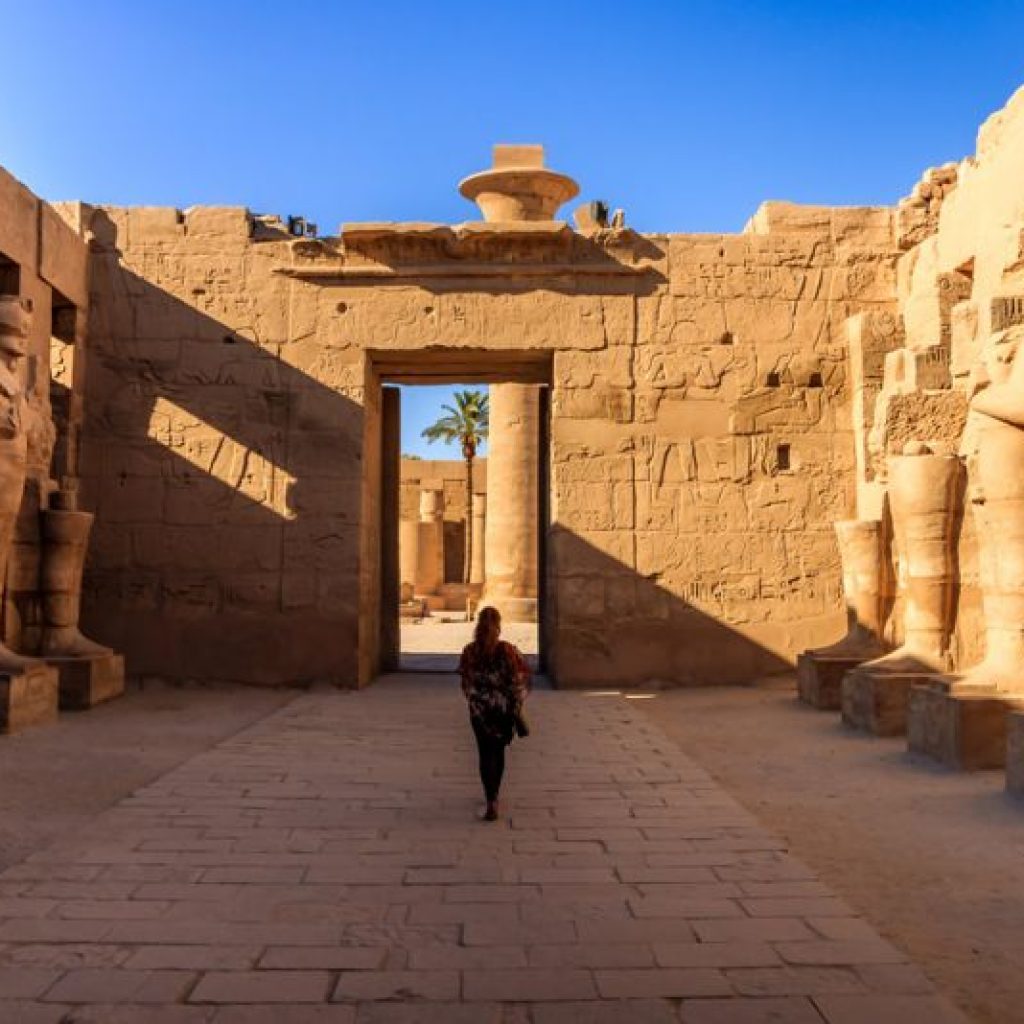


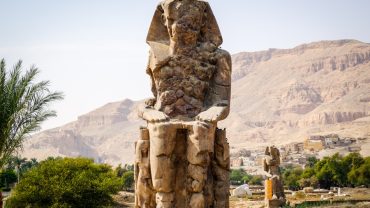


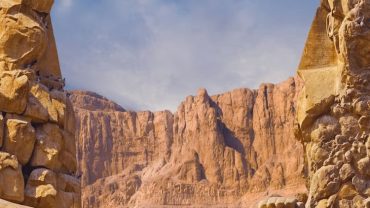


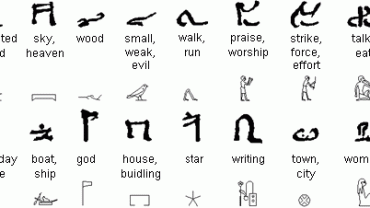



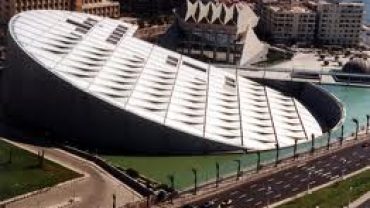























Comment (0)